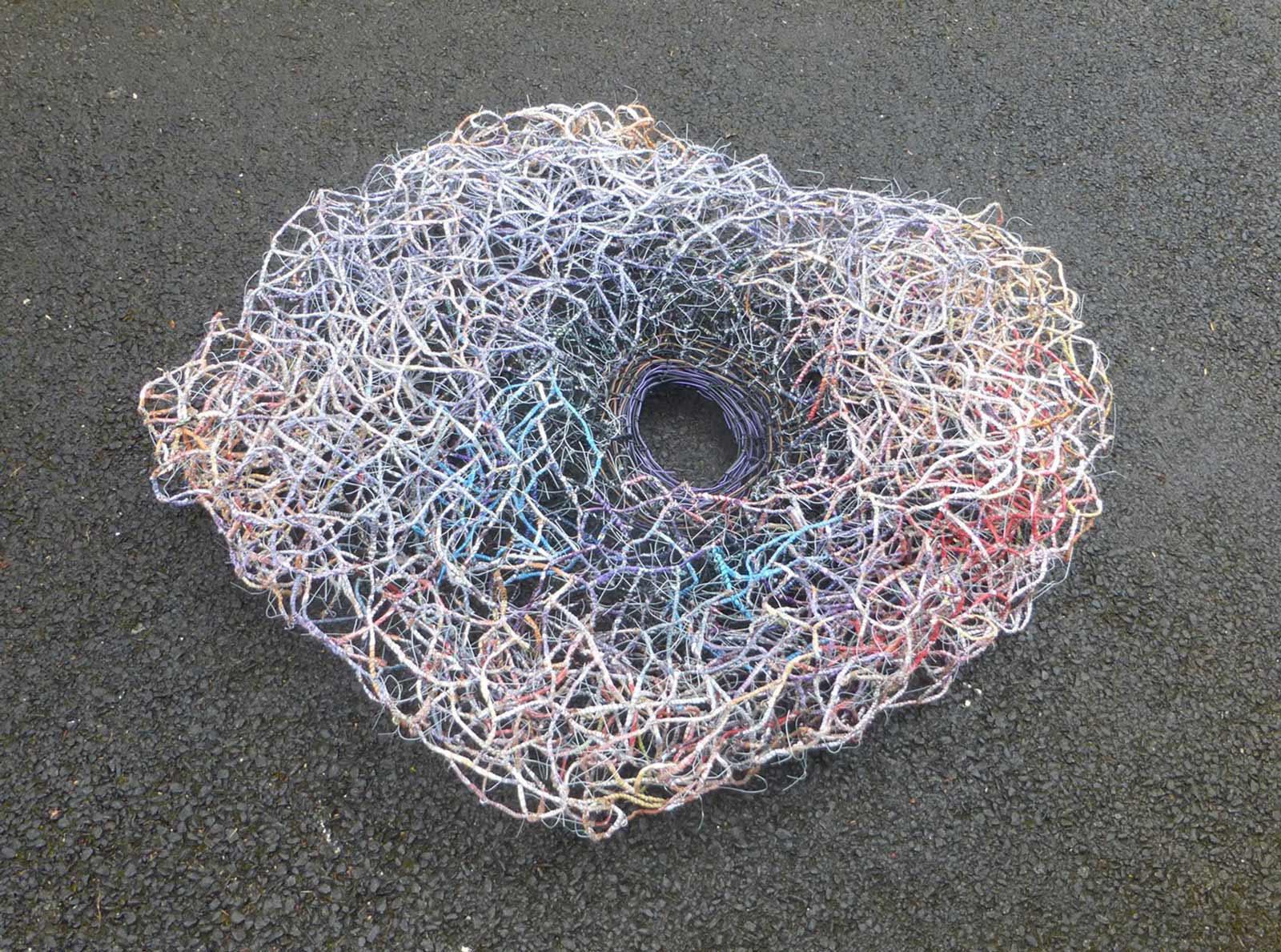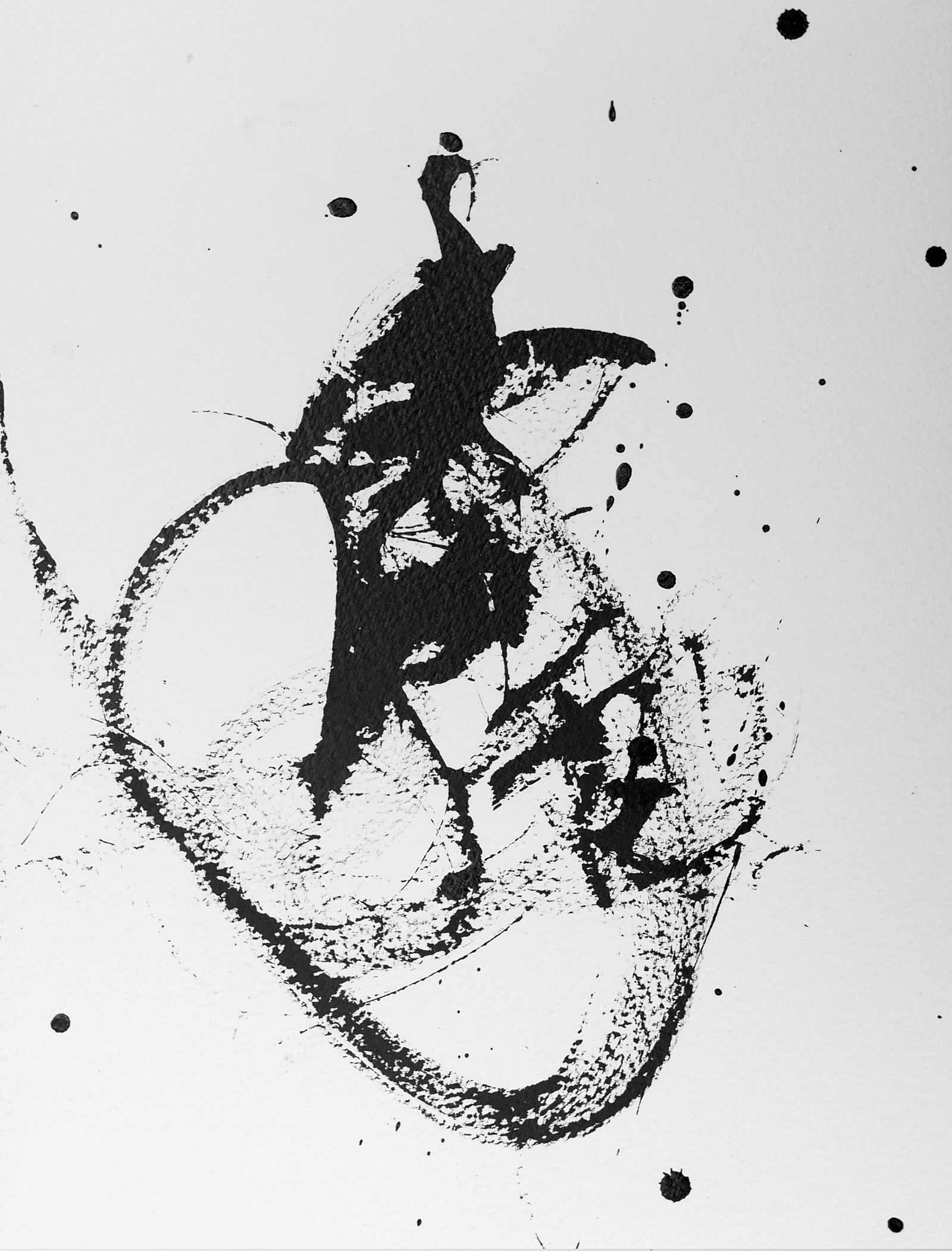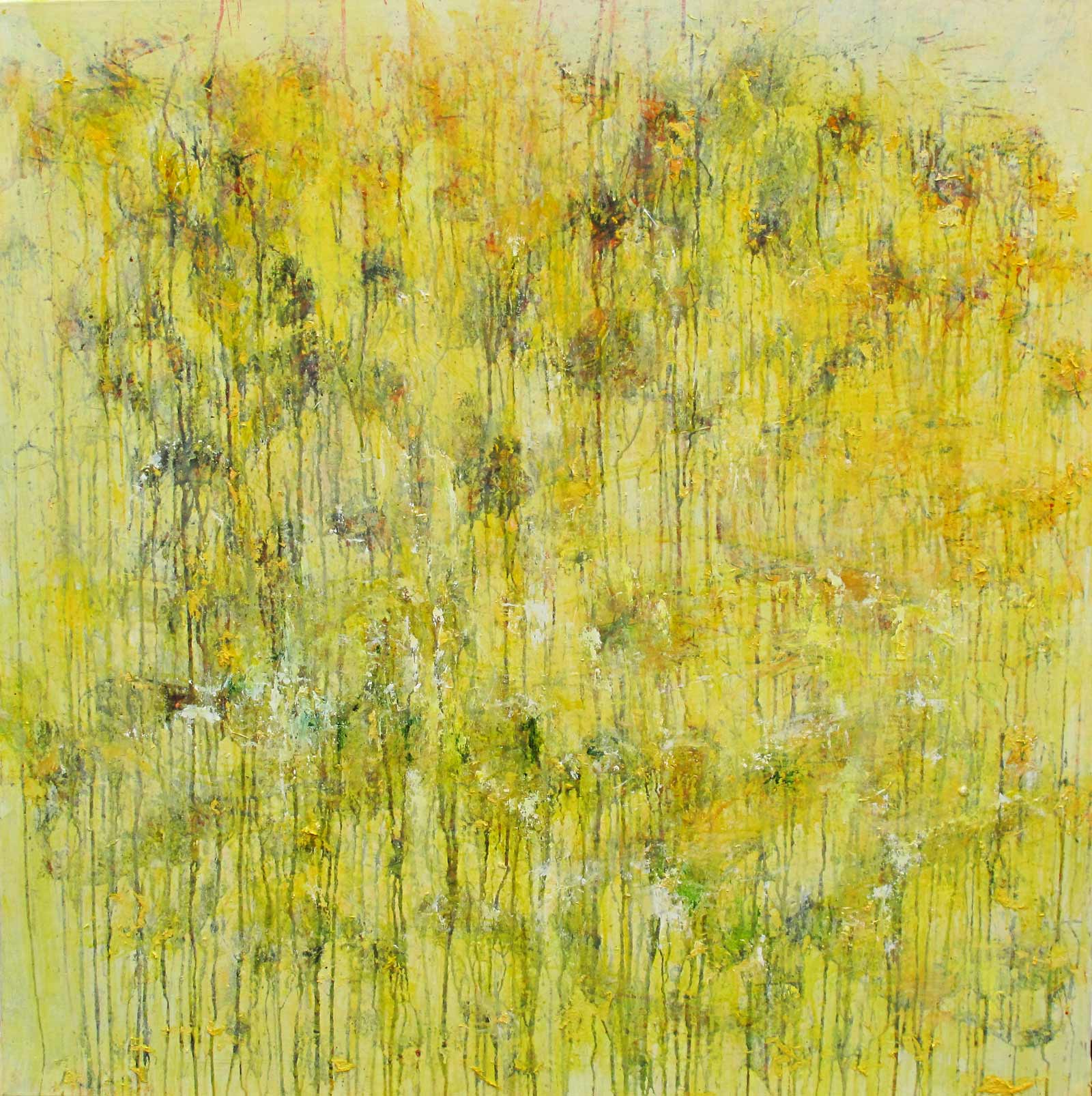
Deborah Duffin MRBS || Shanni Ong
August 31 to September 18 2017
Reception/Meet the Artist Friday September 8, 18.00 to 19.30
An exhibition of 2D and 3D work
Deborah Duffin MRBS
After winning prizes for student work, including the national Winsor & Newton Student Award, Deborah Duffin moved to London, becoming one of the pioneering artists living and working in ‘80’s East London. At that time, it was difficult for young artists to get any exposure for their work, so Deborah began to organise her own shows. Having graduated in painting, she had always felt a greater affinity with drawing, and after some years of personal experimentation, she took up the use of wire and other malleable materials with which to create three-dimensional drawings. At first, working in an unconventional way, she found it difficult to interest galleries in this work: she turned to artist run spaces where she found a sympathetic environment in which to create, sometimes, monumental installations. These works were large scale but delicate, sometimes combining, movement, photography and slide projections.
Her work began to excite interest and she developed a successful national career, with work included in numerous events and exhibitions including: Camden Arts Centre; Whitechapel Gallery; Air Gallery, London; Café Gallery (now CGP London); Camerawork, London; Waterman’s Art Centre; Contemporary Art Society, Royal Festival Hall; Curwen Gallery; Feren’s Art Gallery, Hull; St Paul’s Gallery, Leeds; Plymouth Art Centre; Worcester City Gallery. Solo shows included: Unit 7 Gallery, London; Adam Gallery, London; Lauristan Gallery, London; Barbican Arts Centre, London.
In 1995 she was offered a major commission by British Telecommunications to produce a sculpture with their old telephone wire and electrical components. This opened up a whole new view of the possibilities of working with waste, which was transforming the way in which she worked. The following year she had just installed her show at the Barbican Arts Centre, with a version of the BT piece, when she went into premature labour and her former life came abruptly to an end.
The family relocated to Devon, and after ten years of working on the kitchen table alongside her son, Deborah began slowly to re-ignite her career. This summer her work is included in ‘Naturally Sculpture’ at Burghley House, Lincolnshire and the Elemental Sculpture Park, Gloucestershire. She has a forthcoming solo show in East London in the autumn, and a ‘Pop up’ show scheduled for 2018 at the White Moose Gallery, North Devon.
In tandem with her making, Deborah used her experience of organising her own shows to organise group exhibitions – becoming one of the early artist/curators, a trend now common in today’s art world. While working for ACME housing association for artists, she wrote her first book: ‘Organise Your Own Exhibition’, published with ACME and Arts council funding, which later became one of AN’s best-selling books used by artists worldwide. This led to other publications and to her innovative workshops, seminars and lectures for artists and students, culminating with a research and development project for the London Arts Board. Her work in this area, helped establish professional practise as an essential part of Fine Art education.
Her art works are included in numerous public, corporate and private collections in Britain, France, Germany, Denmark, Corsica, Ukraine, USA and Australia. She has undertaken many commissions and her work has been featured in a wide range of books and periodicals.
Deborah says:
My work emerges through the medium of drawing. I closely observe the natural world – its patterns of movement obsess me as I observe and record evidence of activity and natural processes. Drawing swarms of ants, flocks of birds, rolling seas or soaring cliffs, the elemental rhythms, relationships and formations that emerge are repeated in ever changing combinations – a physical manifestation of life’s energy.
As I work, my relationship with the drawings changes – my creations become less about their subject and more about the process of drawing itself. I watch what occurs visually and follow this up, exploring ways to push the emerging forms to their extremes. My subject matter becomes a visual tool with which to experiment and play – enabling me to tap into my own inner resources. The repetitive processes I use, harness the life force within me – which also encapsulates the essence of my original subject. This allows the works to emerge and take on a character of their own – they become living things, which guide me towards their completion.
Concurrently with this process, I collect materials, which seem to have a relationship to the forms I am drawing – ring pulls, bottle tops and electrical components; or materials which can be manipulated – packaging, wire or food containers. I work with these materials in a similar way to the drawings, using basic techniques – cutting, twisting, bending and tying. Working with simple processes, I build a relationship with my materials. Here too, the processes allow me to tap into something deep within, as I focus on the work I am creating rather than the end result – watching, alert to what occurs. The resulting 3d drawings transcend their materials – a new form of life emerges before my eyes.
My concern with relationships and interconnection extends to the formal properties of the work: the drawing and the edge of the paper, the sculpture and the end of the wall, the installation and the architectural features that become a part of the work. Working with a space, my drawings and sculptures can be altered, reworked, hung in new ways in relation to their host. The on-going process of work and life echoes, and is part of, the phenomena of the natural world – simply by living we are an essential part of all that is.
Shanni Ong
Shanni Ong’s work reflects both the influences of Eastern and Western cultures within her. In her early twenties, she graduated with a degree in Environmental Health, but found herself totally lost in her life. After making a drastic decision to leave her well paved career, she started travelling in the US. Here, she came across the collection of Van Gogh letters, which inspired her to pursue the journey as a travelling artist in painting. She taught herself in brush work and by using dynamic gestures upon layers of colours, she portrayed the depth of her feeling and her inner relationship with the external world. Each painting marks a moment in time along her life journey of struggles, hopes, desires, wishes and dreams. She speaks through the language of colours.
Shanni says:
I am curious about human consciousness and painting is another tool I use to explore the unknown within me. During the painting process I strive to work beyond the conscious mind of thinking, planning and judging. I do this by fully allowing my intuition to follow the senses and feeling into the movement of the energy. I often immerse myself in the chaos of ‘ I don’t know what I am doing’ until the painting finally speaks to me in return, where my deepest being is felt and connected. I do hope the paintings will resonate with the others.



